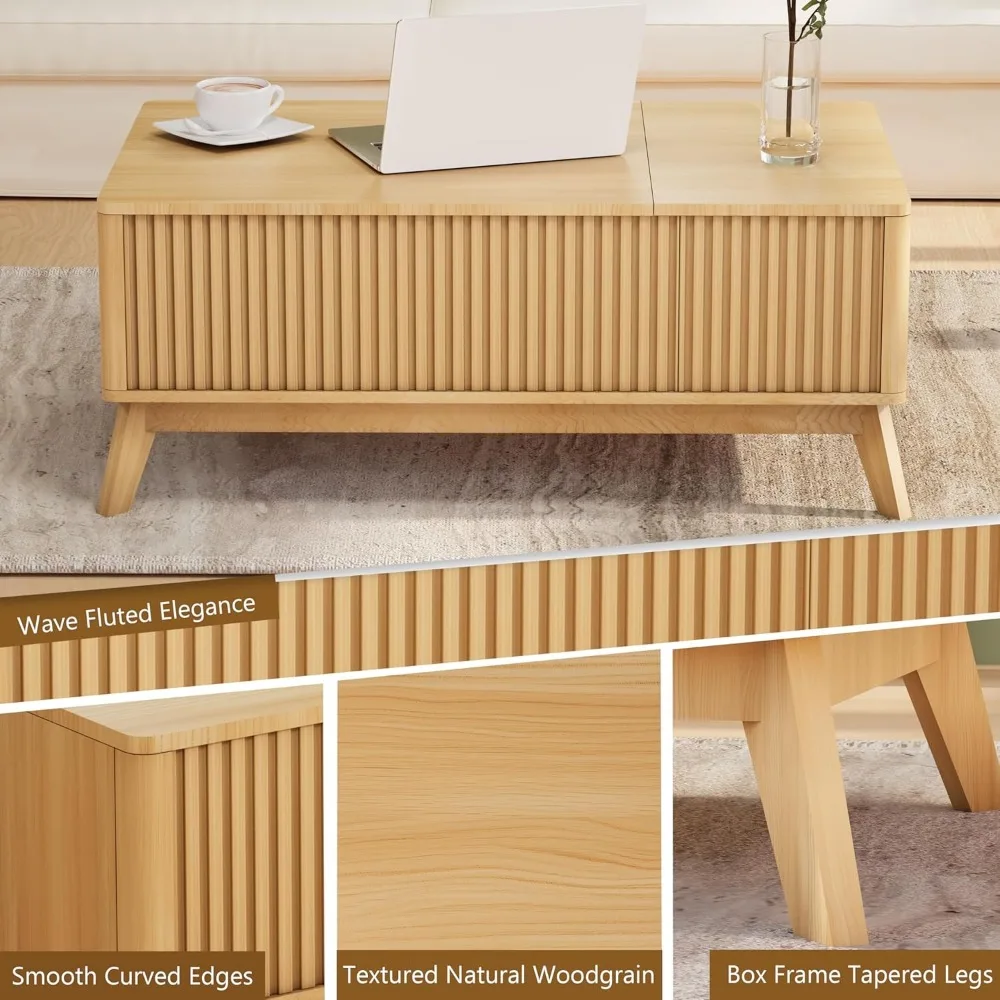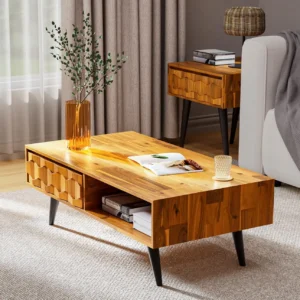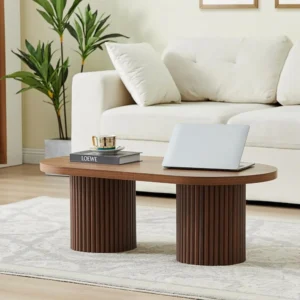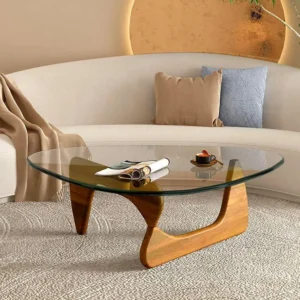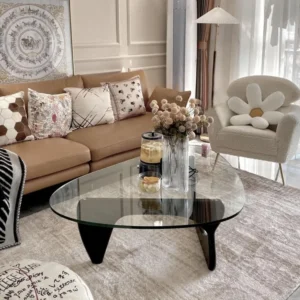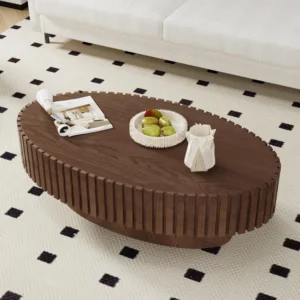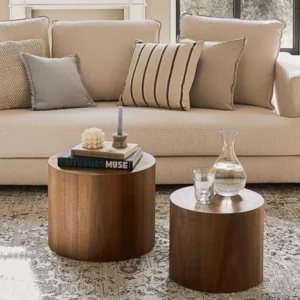Understanding the Danish Modern Design Philosophy
Danish Modern design emerged as a powerful movement in the mid-20th century, representing a perfect marriage between beauty and practicality. This distinctive style developed during the 1940s through the 1960s as Danish designers sought to create furniture that was both visually appealing and highly functional for everyday use.
At its core, Danish Modern design celebrates clean lines, organic forms, and exceptional craftsmanship. The philosophy embraces the idea that beautiful objects should also be practical and accessible to ordinary people. This approach represents a thoughtful response to the needs of post-war society, where designers focused on creating pieces that could enhance daily living through their elegance and utility.
Coffee tables became particularly emblematic of Danish Modern principles. Positioned at the center of living spaces, these tables served as both functional surfaces and artistic statements that brought warmth and sophistication to homes. The emphasis on human-centered design made these pieces exceptionally comfortable to use while maintaining visual lightness.
The principles established during this golden era continue to influence contemporary interiors. Many homeowners and designers still gravitate toward Danish-inspired coffee table designs because they effortlessly complement various interior styles while maintaining their distinctive character. This enduring appeal speaks to the thoughtfulness and quality inherent in Danish Modern design philosophy.
Essential Material Elements in Danish Modern Coffee Tables
The materials selected for Danish Modern coffee tables play a crucial role in defining their character and ensuring their longevity. The thoughtful selection of woods and complementary materials demonstrates the careful consideration Danish designers gave to both aesthetics and functionality.
Key Wood Types
Teak: Perhaps the most iconic material in Danish Modern furniture, teak offers a warm, golden-brown tone that deepens beautifully with age. Its natural oils make it exceptionally durable and resistant to moisture, explaining why many vintage mid-century modern teak coffee tables remain in excellent condition decades later. The wood’s straight grain pattern provides visual consistency while allowing subtle variations that give each piece character.
Rosewood: Prized for its rich, dark coloration and dramatic grain patterns, rosewood was reserved for premium pieces. Its density makes it exceptionally strong, while its natural luster creates depth and sophistication. Rosewood’s distinctive purple-brown hues make these tables particularly striking centerpieces.
Oak: Offering exceptional durability and a lighter aesthetic, oak provided Danish designers with a material that could be shaped into elegant forms while maintaining structural integrity. Its prominent grain gives coffee tables visual texture and character that complements minimalist designs.
Walnut: The chocolate-brown tones and fascinating grain patterns of walnut made it a favorite for creating visually dynamic pieces. Mid-century modern walnut coffee tables showcase the wood’s ability to appear both sophisticated and warm simultaneously.
Beech: With its pale color and fine, even grain, beech allowed designers to create pieces with a lighter visual presence. Often used for frames and legs, this wood could be easily shaped into the organic curves characteristic of Danish design.
Veneer Techniques
Danish craftsmen elevated veneer work to an art form, using thin slices of premium woods to create visually stunning surfaces while conserving precious materials. Techniques like book-matching (where adjoining veneer pieces mirror each other like an open book) created symmetrical patterns that highlighted the natural beauty of wood grain. This approach allowed Danish coffee table construction craft to achieve visual impact while maintaining reasonable material costs.
Complementary Materials
While wood forms the primary structure of most Danish Modern coffee tables, complementary materials add variety and visual interest. Glass tops create an airy quality while showcasing the wooden frame beneath. Metal elements, typically in brass or stainless steel, provide subtle accents rather than dominant features. Cane and cord weaving occasionally appear in shelf elements, adding textural contrast to the smooth wood surfaces.
The mid-century modern Danish coffee tables available today continue to showcase these material traditions, whether in vintage pieces or contemporary interpretations that honor these principles.
Form and Silhouette: Defining Visual Characteristics
The visual appeal of Danish Modern coffee tables stems from their distinctive silhouettes and proportions that create a sense of lightness despite their solid construction. These formal elements combine to produce pieces that appear both grounded and floating simultaneously.
Visual Lightness
Danish designers mastered the art of creating visual lightness through careful engineering. Tables appear to float rather than dominate a space, achieved through tapered elements and thoughtful material removal wherever structurally possible. This creates furniture that feels unimposing despite being substantial enough for daily use.
Characteristic Shapes
Coffee table tops commonly appear in several signature forms:
– Rectangular shapes with softened corners that avoid harsh angles
– Perfect circles that create a sense of harmony and balance
– Organic ovals that echo natural forms
– Free-form shapes influenced by natural elements like kidney beans or river stones
Many of these key characteristics of Danish coffee tables continue to influence contemporary design with their perfect balance of geometric precision and organic softness.
Distinctive Leg Styles
The legs of Danish Modern coffee tables contribute significantly to their recognizable profile:
– Tapered legs that gradually narrow toward the floor, creating visual lightness
– Splayed legs that angle outward, providing stability while suggesting movement
– Sculptural legs with organic curves that showcase the craftsman’s skill
– Compass legs that curve outward and then inward, resembling drawing tools
These leg designs serve both functional purposes (providing stability) and aesthetic ones (creating visual rhythm and movement).
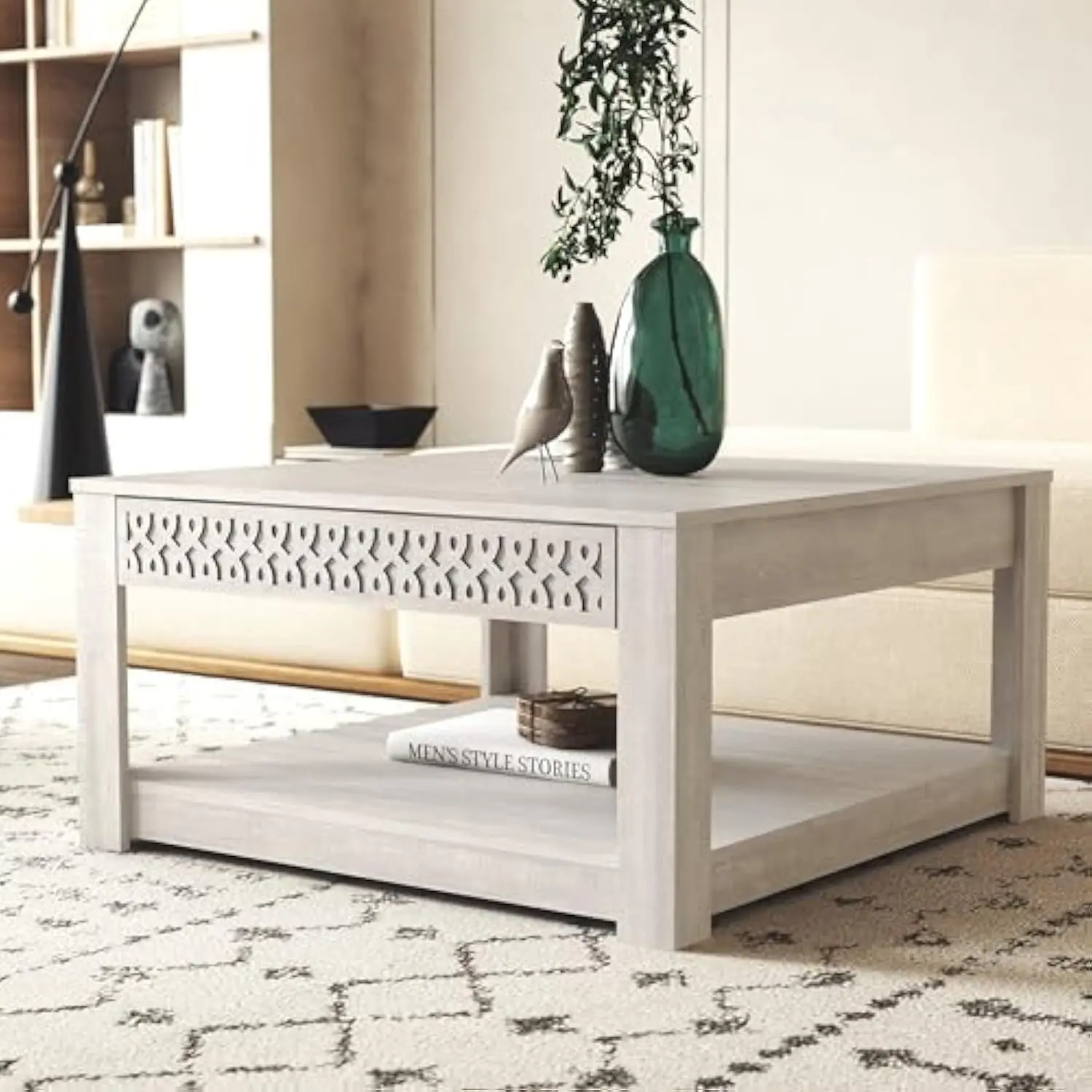
Edge and Top Treatments
The treatment of table edges reveals the designer’s attention to detail:
– Floating tops that appear to hover above the frame
– Beveled or rounded edges that soften the profile
– Solid wood edging around plywood or veneer tops, providing durability and visual framing
– Raised edges that prevent items from falling off while adding visual interest
These formal elements combine to create coffee tables that maintain a perfect balance between simplicity and sophistication, a hallmark of mid-century modern solid wood coffee tables that continue to captivate design enthusiasts today.
Functionality: The Heart of Danish Modern Design
While aesthetically pleasing, Danish Modern coffee tables never sacrifice function for form. Instead, they exemplify the principle that beautiful objects should enhance daily life through thoughtful design and practical features.
Form Follows Function
Danish designers embraced the modernist principle that form should derive from function, but they softened this approach with organic forms and warm materials. Every curve, angle, and proportion serves a purpose while remaining visually pleasing. This approach creates coffee tables that work effortlessly in living spaces while maintaining their distinctive aesthetic appeal.
Ergonomic Considerations
The human-centered approach to Danish coffee tables’ minimalist design is evident in their proportions. Heights typically range from 16-18 inches—ideal for comfortable reach from standard seating. The tables’ dimensions relate harmoniously to the human body, with edges positioned to avoid bumping knees and surfaces sized appropriately for gathering with others.
Integrated Storage Solutions
Many Danish Modern coffee tables incorporate clever storage without compromising their clean lines:
– Simple shelves beneath the tabletop for books and magazines
– Discrete drawers with minimal hardware for smaller items
– Compartmentalized spaces that organize contents naturally
– Nesting tables that can be separated or combined as needed
These features address practical needs while maintaining the characteristic restraint of Danish design.

Versatility and Adaptability
The balanced proportions and thoughtful design of these tables allow them to work in various settings. Their relatively lightweight construction means they can be moved easily when needed, while their stable designs prevent tipping. Many pieces feature reversible elements or adjustable components that adapt to changing needs without requiring replacement.
Mid-Century Modern Solid Wood Coffee Tables, Mid-Century Modern Teak Coffee Tables
$879.95 Select options This product has multiple variants. The options may be chosen on the product pageMid-Century Modern Danish Coffee Tables, Mid-Century Modern Oval Coffee Tables, Mid-Century Modern Solid Wood Coffee Tables
$390.05 Select options This product has multiple variants. The options may be chosen on the product pageMid-Century Modern Glass Top Coffee Tables, Mid-Century Modern Glass Top Side & End Tables
$460.58 Select options This product has multiple variants. The options may be chosen on the product pageMid-Century Modern Glass Top Coffee Tables, Mid-Century Modern Vintage Coffee Tables, Mid-Century Modern Vintage Side & End Tables
$725.36 Select options This product has multiple variants. The options may be chosen on the product pageMid-Century Modern Oval Coffee Tables, Mid-Century Modern Solid Wood Coffee Tables
$679.56 Select options This product has multiple variants. The options may be chosen on the product pageMid-Century Modern Nesting Table Sets, Mid-Century Modern Round Coffee Tables
$462.57 Select options This product has multiple variants. The options may be chosen on the product page
Craftsmanship Excellence: Construction Techniques
The exceptional durability of Danish Modern coffee tables stems from meticulous construction techniques that prioritize structural integrity without compromising aesthetics. These methods reveal why many vintage pieces remain functional and beautiful decades after their creation.
Signature Joinery Techniques
Danish craftsmen employed sophisticated joinery methods that often became visual features rather than hidden elements:
Dovetail Joints: Primarily used in drawer construction, these interlocking joints resemble a dove’s tail when viewed from certain angles. They provide exceptional strength while showcasing the craftsman’s skill.
Mortise-and-Tenon Connections: Commonly found where legs join rails or frames, this technique creates incredibly strong bonds by fitting a protruding tenon into a precisely cut mortise hole. The joint may be visible or hidden depending on the design intent.
Dowel Joints: Wooden pegs (dowels) reinforce connections between components, creating strong bonds that resist the stresses of daily use. Often visible as small circular details, they become part of the design language.
When comparing different table types, glass vs. wood coffee tables reveal how construction techniques adapt to accommodate different materials while maintaining design integrity.
Finishing Excellence
The finish on Danish Modern pieces serves both protective and aesthetic purposes. Multiple thin coats of oil or lacquer penetrate the wood rather than creating a thick surface film. This approach highlights the natural grain while providing protection that can be refreshed over time. The resulting satin finish offers a subtle luster that enhances the wood’s natural beauty while resisting fingerprints and minor scratches.
Attention to Detail
The hallmark of quality Danish craftsmanship lies in details that might go unnoticed at first glance:
– Perfectly flush surfaces where different woods meet
– Consistent gaps between movable parts like drawers
– Smooth transitions between different components
– Even thickness in all similar elements
– Carefully aligned grain patterns across surfaces
These details demonstrate the meticulous approach that elevates Danish Modern coffee tables from simple furniture to enduring design objects.
Identifying Authentic Danish Modern Coffee Tables
Distinguishing genuine Danish Modern coffee tables from general mid-century pieces or contemporary reproductions requires attention to specific details that reflect their design heritage and quality construction.
Danish Modern vs. General Mid-Century Modern
While Danish Modern falls within the broader mid-century modern category, it has distinctive characteristics:
– Greater emphasis on warm woods (particularly teak) versus the American preference for cheaper woods with darker stains
– More organic, sculptural elements compared to the sometimes stricter geometries of American MCM
– Exposed joinery celebrating craftsmanship rather than hiding construction methods
– Refined proportions that often appear more delicate than their American counterparts
Understanding these differences helps when identifying Danish-inspired coffee tables among various mid-century styles.
Quality Markers
Authentic Danish Modern pieces typically display several indicators of quality:
– Solid wood construction in structural elements
– Precise joinery with tight-fitting connections
– Consistent finish application without drips or uneven coloration
– Smooth drawer operation with proper stops
– Balanced proportions with mathematical relationships between components
– Tapered elements with consistent angles
These qualities distinguish genuine pieces from mass-produced imitations that might mimic the style but lack the careful execution.
Stylistic Authenticity
The differences between various furniture periods can be subtle but important. Understanding mid-century vs. mid-century modern furniture helps collectors identify authentic Danish Modern pieces by recognizing their characteristic restraint, elegant proportions, and emphasis on showing the natural beauty of materials rather than embellishing them.
The Masters Behind the Designs: Key Influencers
The distinctive elements of Danish Modern coffee tables reflect the visions of several influential designers whose work defined the movement and continues to inspire contemporary furniture.
Hans J. Wegner
Wegner’s background in cabinetmaking informed his deep understanding of wood and its possibilities. His coffee tables often feature organic shapes with beautifully tapered legs and thoughtful details like floating tops or woven shelf elements. His work demonstrates how traditional woodworking techniques could create thoroughly modern forms with exceptional comfort and visual lightness.
Finn Juhl
Trained as an architect rather than a cabinetmaker, Juhl approached furniture design with a sculptor’s eye. His coffee tables often feature more dramatic, sculptural forms with elements that appear to float or balance precisely. His work pushed the boundaries of what was structurally possible while maintaining the functional requirements of everyday furniture.
Børge Mogensen
Mogensen’s designs embody functional simplicity with honest construction. His coffee tables tend toward rectangular forms with exceptionally clean lines and visible joinery that celebrates their construction. The straightforward approach creates pieces that work seamlessly in various interior settings, including with contemporary mid-century modern round coffee tables.
Arne Jacobsen
Though better known for his iconic chairs, Jacobsen’s architectural background influenced his approach to all furniture design. His coffee tables demonstrate precise geometric forms with exceptional attention to proportions. The resulting pieces have a mathematical harmony that creates visual calm and balance.
Kaare Klint
As an educator and designer, Klint established many principles that guided Danish Modern furniture design. His emphasis on human-centered proportions and functional analysis created a foundation for coffee tables that perfectly suited their intended use. His methodical approach to design continues to influence furniture proportions today.
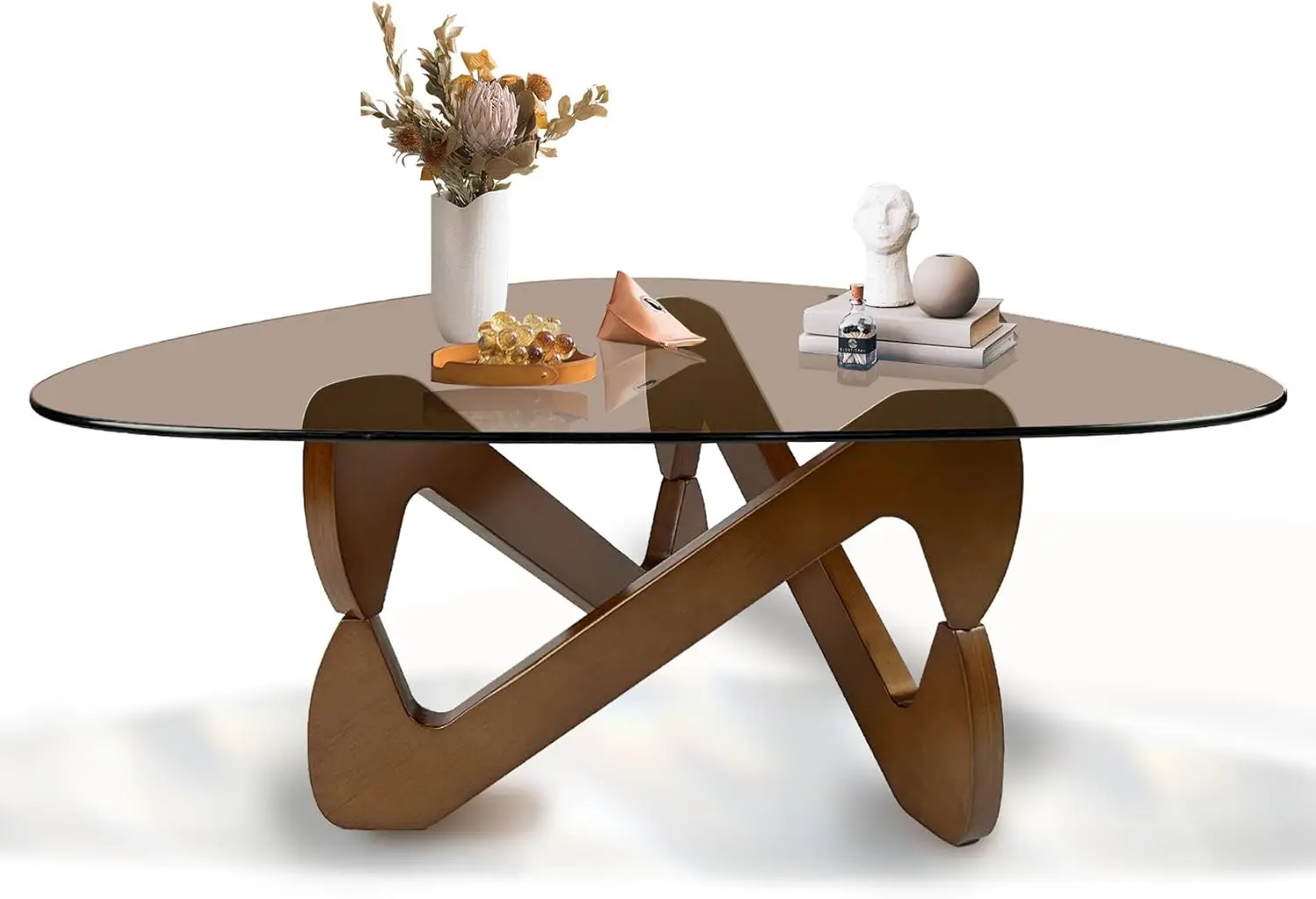
How to Integrate Danish Modern Coffee Tables in Contemporary Spaces
The versatility of Danish Modern coffee tables allows them to enhance various interior styles while maintaining their distinctive character. Their balanced proportions and warm materials create natural focal points that complement rather than compete with other elements.
Complementary Interior Styles
Danish Modern coffee tables pair naturally with several design approaches:
– Minimalist interiors benefit from the tables’ warm materials and organic shapes
– Contemporary spaces gain historical depth and natural texture
– Traditional rooms receive a touch of modernism without jarring contrasts
– Eclectic interiors gain a grounding element that ties diverse pieces together
The design versatility explains why Scandinavian and Danish coffee table design continues to influence contemporary interiors worldwide.
Scale Considerations
Selecting the right size table ensures proper proportion within a space:
– Allow 12-18 inches between the coffee table and seating
– Choose a height slightly lower than or equal to the seat height of surrounding furniture
– For smaller spaces, consider mid-century modern glass top coffee tables that create visual openness through their transparent surfaces
– In larger rooms, consider pairing a main coffee table with smaller side tables from the same design family
Material and Color Coordination
The natural wood tones of Danish Modern pieces offer versatile coordination options:
– Teak’s warm golden tones complement cool colors like blues and greens
– Walnut’s deeper brown hues pair beautifully with neutrals and earth tones
– Lighter woods like oak or beech work well with pastel colors and white spaces
– Consider the undertones of your woods (orange, yellow, red) when matching with other elements
Styling Approaches
Styling Danish Modern coffee tables works best with a restrained approach that honors their clean lines:
– Curate a small collection of objects rather than cluttering the surface
– Include items with varying heights to create visual interest
– Incorporate natural materials like ceramics or plants that echo the table’s organic qualities
– Allow portions of the wood surface to remain visible to showcase the material
Why Danish Modern Coffee Tables Remain Timeless
The enduring appeal of Danish Modern coffee tables stems from their perfect balance of aesthetic beauty, practical functionality, and exceptional craftsmanship—qualities that transcend passing trends.
Enduring Design Principles
Danish Modern coffee tables embody design principles that remain relevant regardless of changing fashion. Their emphasis on clean lines, natural materials, and human-centered proportions creates pieces that feel appropriate in any era. Unlike heavily stylized furniture that dates quickly, these tables exhibit a quiet confidence that ages gracefully.
Sustainable Approach
Long before sustainability became a mainstream concern, Danish designers embraced principles that naturally aligned with environmental consciousness. Their emphasis on quality materials, durable construction, and timeless aesthetics created pieces meant to last generations rather than be replaced with changing trends. This approach resonates strongly with contemporary values that prioritize longevity over disposability.
Emotional Connection
Beyond their practical functions, these tables create an emotional connection through their organic warmth and tactile qualities. The natural variations in wood grain create pieces that feel alive and unique, while their human-centered proportions make them intuitively comfortable to use. This combination of beauty and function creates furniture that becomes more meaningful over time.
Contemporary Relevance
As more people seek alternatives to mass-produced furniture, Danish Modern coffee tables offer a compelling option that combines artistic design with practical everyday use. Their emphasis on quality materials, thoughtful construction, and timeless aesthetics continues to appeal to those who value objects that bring both beauty and function into daily life.
Are Danish Modern Coffee Tables Worth the Investment?
When considering a Danish Modern coffee table, many wonder whether these pieces justify their often premium price points. Understanding their value proposition helps make an informed decision.
Quality Considerations
Authentic vintage Danish Modern pieces and high-quality contemporary interpretations share several characteristics that contribute to their value:
– Solid hardwood construction in critical structural areas
– Precision joinery that maintains integrity over decades
– Finishes that can be refreshed rather than requiring complete replacement
– Designs that accommodate normal wear while aging beautifully
These quality aspects typically result in furniture that maintains both function and beauty for generations rather than years.
Value Retention
Unlike many furniture purchases that depreciate rapidly, well-maintained Danish Modern coffee tables often retain or even increase in value over time. This is particularly true for pieces by recognized designers or from notable manufacturers. Even lesser-known pieces maintain value better than typical mass-produced alternatives due to their quality construction and timeless design.
Long-Term Economics
While the initial investment may be higher than for mass-produced alternatives, the extended lifespan of Danish Modern pieces often makes them more economical over time. A quality table might last 50+ years with proper care, compared to 5-10 years for many contemporary options, resulting in significantly lower annual cost despite the higher purchase price.
Design Versatility
The adaptability of these tables to various interior styles means they can transition through multiple homes and design phases without requiring replacement. This versatility adds practical value beyond the piece itself by reducing the need for future furniture purchases as tastes evolve.
How Can You Tell if a Danish Modern Coffee Table is Well-Made?
Evaluating the quality of a Danish Modern coffee table requires attention to specific details that reveal its construction integrity and design authenticity.
Construction Evaluation Points
When examining a table, look for these quality indicators:
– Joints should fit tightly with no gaps or excessive glue
– Drawer runners should operate smoothly without sticking
– Wood grain should be matched thoughtfully across surfaces
– Table should feel sturdy without wobbling when gently pushed
– Finishing should be consistent with no rough spots or drips
These characteristics indicate careful craftsmanship and attention to detail throughout the construction process.
Common Issues to Examine
For vintage pieces, be aware of these potential concerns:
– Check for repairs, especially around joints and legs
– Look for consistent coloration that indicates original finish
– Examine veneer surfaces for bubbling, chipping, or separation
– Test stability by gently rocking the table to detect loose joints
– Verify that any glass components are the correct thickness and free from chips
Many issues can be professionally restored, but their presence should affect pricing and purchase decisions.
Distinguishing Quality Reproductions
For contemporary pieces inspired by Danish Modern design:
– Look for solid wood in structural components rather than composite materials
– Verify proper wood selection that matches traditional choices
– Examine joinery methods to ensure they follow traditional techniques
– Check proportions against historical examples to confirm design authenticity
These considerations help ensure that new pieces honor the craftsmanship traditions that made Danish Modern coffee tables enduring classics in the first place.

